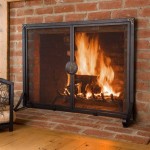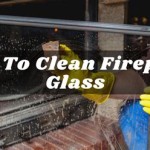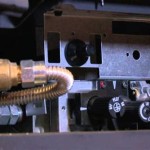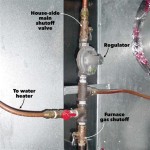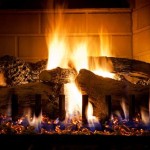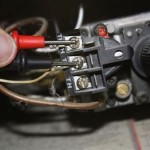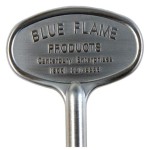Patio With Fireplace: Enhancing Outdoor Living Spaces
A patio equipped with a fireplace represents a significant upgrade to any outdoor living area. It transforms a simple paved space into a versatile and inviting extension of the home, suitable for relaxation, entertainment, and year-round enjoyment. The inclusion of a fireplace provides not only warmth and light but also a focal point that enhances the aesthetic appeal of the patio. Factors to consider when planning and installing a patio with a fireplace range from the type of fireplace to the overall design and materials chosen.
The integration of a fireplace into a patio design requires careful consideration of safety regulations, building codes, and environmental factors. Precise planning is essential to ensure that the fireplace is both functional and aesthetically integrated into the surrounding landscape. The placement of furniture, lighting, and landscaping elements must complement the fireplace, creating a cohesive and harmonious outdoor environment. This article will explore the benefits, considerations, and design options associated with incorporating a fireplace into a patio.
Benefits of a Patio With a Fireplace
The advantages of having a patio with a fireplace are multifaceted. Beyond the obvious provision of warmth on cool evenings, a fireplace significantly contributes to the ambiance and usability of the outdoor space. Its presence can extend the outdoor season, allowing homeowners to enjoy their patios well into the fall and even during the winter months, depending on the climate. Furthermore, a fireplace serves as an attractive gathering point for social events, fostering a sense of community and relaxation.
Aesthetically, a fireplace can be a stunning focal point, adding character and sophistication to the patio. The design possibilities are vast, ranging from rustic stone fireplaces to sleek, modern gas-fueled units. The choice of materials and styles allows homeowners to tailor the fireplace to complement the architectural style of their home and the overall design of their outdoor space. The visual appeal of a fireplace can significantly increase the property value and create a memorable outdoor experience.
Beyond the social and aesthetic benefits, a patio fireplace can also offer practical advantages. It can be used for cooking, providing an alternative to grilling for those who enjoy outdoor meal preparation. A wood-burning fireplace can also offer a cost-effective heating solution compared to electric heaters, especially in areas where firewood is readily available. The crackling sound of a wood fire can also provide a calming and therapeutic effect, enhancing the overall sense of well-being.
Types of Patio Fireplaces
Several types of fireplaces are suitable for patio installations, each with its own set of advantages and disadvantages. The choice of fireplace depends on factors such as budget, space constraints, fuel availability, and aesthetic preferences. Understanding the different types of fireplaces is crucial for making an informed decision that aligns with the homeowner's needs and lifestyle. The common types include wood-burning, gas, electric, and propane fireplaces.
Wood-Burning Fireplaces: These fireplaces offer a traditional and authentic experience, providing the ambiance of a real fire with the crackling sound and scent of burning wood. They can be constructed from various materials, such as brick, stone, or concrete, and can be custom-built to fit specific design requirements. However, wood-burning fireplaces require a chimney or flue for proper ventilation and can be subject to local regulations regarding emissions and smoke control. They also require a regular supply of firewood and ongoing maintenance to remove ashes and clean the chimney.
Gas Fireplaces: Gas fireplaces are a convenient and clean-burning alternative to wood-burning fireplaces. They can be fueled by natural gas or propane and offer instant ignition with adjustable flame height and heat output. Gas fireplaces require professional installation to connect to a gas line or propane tank. They produce less smoke and ash than wood-burning fireplaces and require minimal maintenance. Gas fireplaces are a popular choice for homeowners seeking a hassle-free and efficient heating solution for their patios.
Electric Fireplaces: Electric fireplaces are the simplest and most versatile option for patio installations. They do not require any venting or fuel lines and can be plugged into a standard electrical outlet. Electric fireplaces use electric heating elements to generate heat and often feature realistic flame effects to mimic the appearance of a real fire. They are lightweight and portable, making them easy to move and position. Electric fireplaces are a safe and energy-efficient option for providing supplemental heat and ambiance to a patio.
Propane Fireplaces: These fireplaces offer a balance between convenience and the aesthetic appeal of an open flame. They use propane tanks, which provide flexibility in terms of placement since they don't require a direct gas line. Propane fireplaces are relatively easy to install and operate, offering adjustable heat levels. However, they require the regular replenishment of propane tanks, and the storage of these tanks must adhere to safety guidelines. They are a viable option for those seeking a real flame experience without the complexity of a wood-burning fireplace.
Design and Material Considerations
The design of a patio with a fireplace should seamlessly integrate with the existing architecture of the home and the surrounding landscape. The materials chosen for the fireplace and the patio should be durable, weather-resistant, and aesthetically pleasing. Careful consideration of these factors will ensure that the patio with a fireplace becomes a cohesive and inviting outdoor space.
The size and scale of the fireplace should be proportionate to the size of the patio. A large fireplace can overwhelm a small patio, while a small fireplace can get lost in a large space. The style of the fireplace should complement the overall design theme of the patio, whether it is rustic, modern, or traditional. The materials used for the fireplace should be chosen to withstand the elements and maintain their appearance over time. Common materials include brick, stone, concrete, stucco, and metal.
The placement of the fireplace is crucial for maximizing its functionality and aesthetic impact. It should be positioned to provide a focal point for the patio and to create a comfortable seating area. The fireplace should also be located away from flammable materials and in compliance with local building codes and safety regulations. Consideration should be given to wind direction and potential smoke drift to minimize any nuisance to neighbors. The surrounding landscape should be designed to complement the fireplace and enhance the overall ambiance of the patio.
The patio surface should be durable, slip-resistant, and easy to maintain. Common materials include pavers, concrete, stone, brick, and tile. The choice of material should complement the style of the fireplace and the overall design of the outdoor space. The patio surface should be properly graded to ensure proper drainage and prevent water from pooling. Lighting should be strategically placed to illuminate the patio and create a warm and inviting atmosphere. Consider incorporating landscape lighting to highlight the fireplace and surrounding plants.
Furniture should be chosen to be comfortable, durable, and weather-resistant. Outdoor furniture made from materials such as wicker, teak, aluminum, and wrought iron are good choices. Consider adding cushions and pillows for added comfort and style. Throw blankets can also be added to provide extra warmth on cool evenings. Accessories such as outdoor rugs, planters, and decorative items can be used to personalize the patio and create a welcoming atmosphere.
Landscaping plays a vital role in creating a cohesive and inviting outdoor space. Plants should be chosen to complement the style of the patio and provide shade, privacy, and visual interest. Consider incorporating trees, shrubs, flowers, and groundcover to create a lush and inviting environment. The landscaping should be designed to complement the fireplace and enhance the overall ambiance of the patio. It is important to choose plants that are appropriate for the local climate and that require minimal maintenance.
Proper ventilation is paramount, especially with wood-burning fireplaces. Adequate airflow ensures efficient combustion and minimizes smoke production. The chimney height and diameter must adhere to local building codes to guarantee proper drafting. The location of the fireplace should also consider prevailing wind patterns to prevent smoke from blowing back into the patio area or affecting neighboring properties.
The installation of a patio fireplace may necessitate permits and inspections from local authorities. It is crucial to research and comply with all applicable building codes and regulations. This can include requirements for setbacks from property lines, chimney height restrictions, and emission standards. Failure to obtain the necessary permits can result in fines or the need to dismantle the fireplace.
Safety should be the foremost consideration when designing and using a patio fireplace. A fire-resistant barrier should be installed around the fireplace to prevent accidental contact with flames or hot surfaces. Fire extinguishers and other safety equipment should be readily accessible. Children and pets should be supervised at all times when the fireplace is in use. Regular maintenance, including chimney cleaning and inspection, is essential to ensure the safe operation of the fireplace.
Considerations must also be given to the type of fuel used, if applicable. For wood-burning fireplaces, seasoned hardwoods are preferable as they burn cleaner and produce less smoke. Avoid burning treated wood, as it can release harmful chemicals into the air. If using propane or natural gas, ensure that all connections are properly installed and maintained to prevent leaks. Regularly inspect gas lines for any signs of damage or wear.

How To Build An Outdoor Fireplace Step By Guide Buildwithroman

30 Outdoor Fireplace Ideas Cozy Fireplaces

53 Most Amazing Outdoor Fireplace Designs Ever

Five Fabulous Outdoor Fireplace Ideas Coogans Landscape Design

Should I Install A Patio Fire Pit Or Fireplace In My Backyard

20 Outdoor Fireplace Ideas Patio Diy Backyard

Outdoor Fireplace Ideas The Home Depot

Outdoor Fire Pits And Fireplaces Katy Houston Greater Areas

Warm Up Your Outdoor Area With A Fireplace Coogans Design Build

20 Hardscape Dream Projects Outdoor Fireplace Designs Backyard Patio
Related Posts

